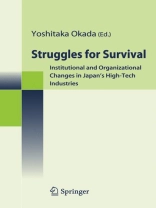How did Japanese companies, technology-supporting organizations, and governments reformulate organizational strategies, industrial structures, and institutions to revive Japanese high-tech industries (semiconductor, telecommunications, and biotechnology) in the 1990s? This book takes a comprehensive look at the question by integrating the fields of institutional economics and corporate strategy, an approach that will be of significant interest theoretically and empirically to scholars, professionals, and graduate students. Complex interactions among diverse technology-related actors are presented, focusing on co-evolution among market changes induced by technology innovation, macro-level institutional arrangements for innovation, and corporate strategies for survival. Insights are provided on diverse types of institutional arrangements, technology innovation policies, and management practices for companies and technology organizations.
Mục lục
Institutions, Organizations, and Techno-Governance for Innovation.- Decline of the Japanese Semiconductor Industry: Institutional Restrictions and the Disintegration of Techno-Governance.- Institutional Changes and Corporate Strategies for Survival in the Japanese Semiconductor Industry.- Institutional, Technological, and Strategic Factors in the Global Integrated-Circuit Industry: The Persistence of Organizational Forms.- Industrial Environment, Institutional Changes, and Technological Innovations in the Japanese Telecommunications Industry.- Transition in Japan’s Biotechnology Sector: Institutional Organizational Co-Evolution.- Conclusion.












